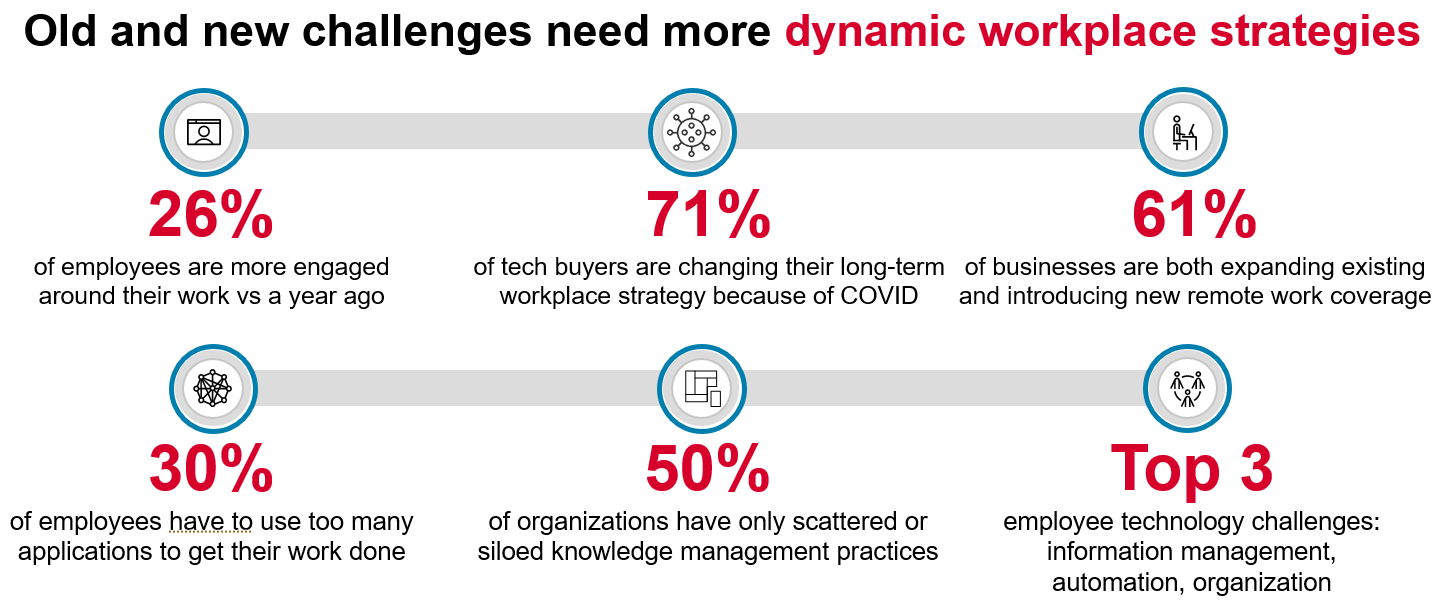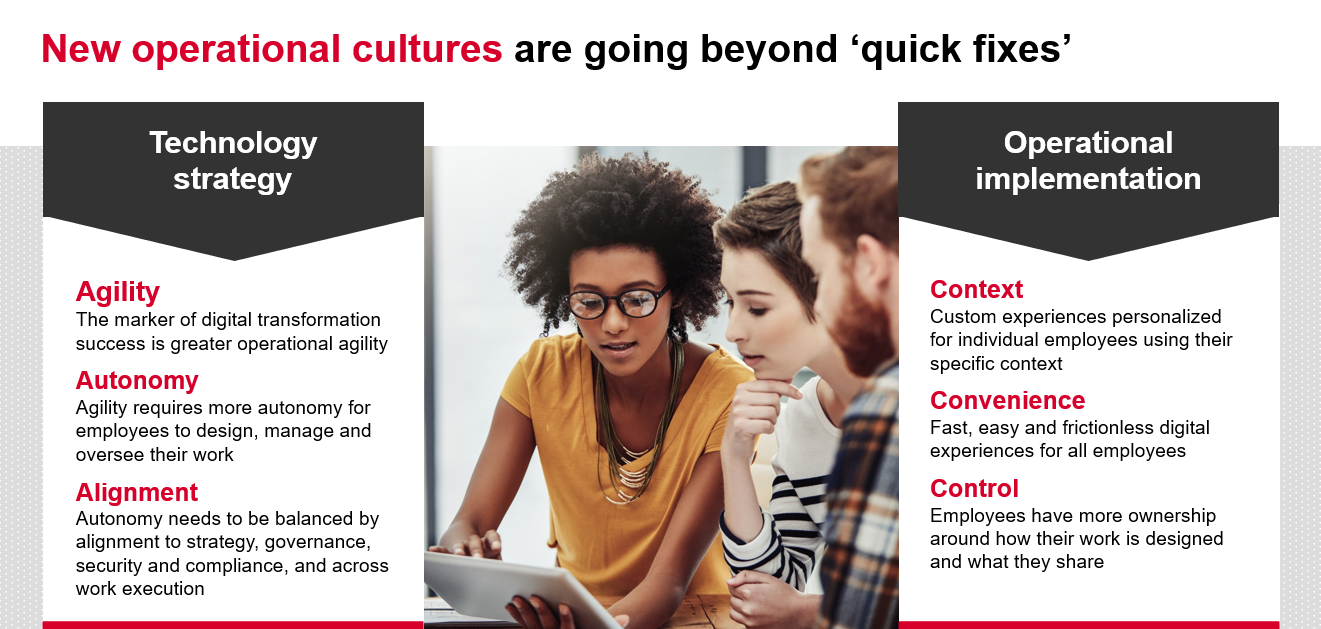
The upheaval in the nature of work wrought by the COVID-19 pandemic has been well documented. Knowledge workers have become isolated contributors in their homes, while members of the frontline labor force have soldiered on at the traditional worksite, placing themselves and their families in harm’s way.
The profound technology and cultural implications of how work is organized, performed and managed in the COVID-19 paradigm were the focus of the 451 Alliance webinar The Future of Work: Implications for Technology Leaders.
Chris Marsh, principal research analyst for the Workforce Productivity and Collaboration (WPC) practice at 451 Research, shared insights drawn from a study of 451 Alliance members on a range of workforce, management, technology and spending topics.
New WPC imperatives arise from remote work
In the 451 Alliance study on WPC, an assessment of work ‘engagement’ – encompassing emotional investment in the job and duties, connection with colleagues, and other variables – demonstrated the divergent effects of the pandemic.
“Compared to a year ago, there are approximately as many employees who say they still feel less engaged when it comes to their work and getting their work done day-to-day, as are feeling more engaged around their work,” Marsh said.
The findings highlight the reality that working in a tech-enabled silo has both raised and lowered the investment of employees in their work, in roughly equal numbers.

According to Marsh, the need to create better engagement for employees is greatly influencing workforce technology decision making. “We see 71% of tech buyers saying that they’re having to reformulate their longer-term digital workplace strategies,” he observed.
Specialized tooling needed for frontline workers
Frontline workers (FLW) – those employees who must be physically present in order to do the job at hand – present a unique set of engagement and collaboration challenges. Marsh posited that organizations are recognizing the need to extend responsibility to the FLW, but noted that, “if more of that autonomy is going to be pushed into teams at the edge of the workforce – nontechnical employees [whom organizations may wish] to equip with new workflow automation solutions or no-code solutions, just as examples – [there is] concern that there isn’t then a ‘wild west’ of a very distributed, fragmented set of processes.”
It’s critical, he continued, that “there is an alignment across teams…back to company goals…[and] back to compliance, regulatory, security requirements.”

In response to a question following the presentation, Marsh stated that FLWs “want the ability to quickly and easily create their own workflows in a way that they’re not having to rely on some kind of centralized team to do that for them.”
To meet the needs of the hybrid, highly distributed workforce, he noted that “less mature tools are becoming more mature, and maybe the more mature tools are becoming more accessible,” with accessibility being key for the FLW whose digital experience is typically encapsulated in a mobile phone.
The changing role of HR
While the technology equipping the ‘workplace’ – in both the traditional sense and in the broader virtual context – is evolving to help organizations fulfill their digital objectives, so is the function of HR departments. Marsh reported that “51% of HR professionals say their skill set has had to evolve in recent years to include deeper expertise in understanding workforce productivity dynamics and workforce tooling.”

HR process improvement and staff retention continue to be primary focus points for HR, but the division appears poised to play a significant role around employee skill development, workforce productivity improvements and employee engagement, he observed.
Digital maturity drives resilience
Overall, Marsh says, the data shows that organizations capable of enduring difficult economic circumstance share some important characteristics. “Our research shows that the more resilient organizations – those that feel more prepared to tackle any future disruptions that may come down the line and feel as though they can drive both productivity and employee engagement – tend to have a cluster of commonalities,” he reported.
“They tend to be more digitally mature; they tend to be basing more of their strategic decisions on data they’ve worked hard to make available to inform those decisions; they’re also more likely to be prioritizing improving the workforce experience as a transformation goal – not just as something that needs to be addressed…as a tactical aim, but really right up there amongst the companywide transformation initiatives that are being pursued.”

As a member of the 451 Alliance, you can view this webinar and all research reports through our member portal. These materials, available on demand and at no cost, are the collective product of Alliance members’ participation in our quantitative and qualitative studies. Thanks for contributing your perceptions to the Alliance knowledge base, which benefits the entire community.

